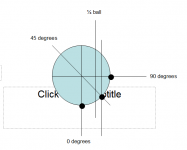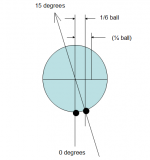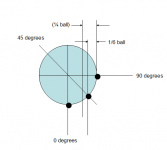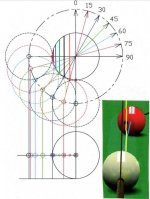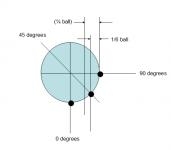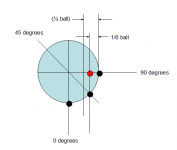Here is an old simple pivot system to answer a pm.
Make sure that you only need the CB center to start the aim at the CP on the OB.
The small parallel shift will be focused to the small OB's center - disregard the larger CB altogether.
After the shift, pivot at the bridge to the center of the CB and shoot.
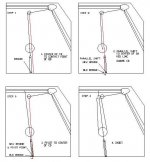
Have fun.
Make sure that you only need the CB center to start the aim at the CP on the OB.
The small parallel shift will be focused to the small OB's center - disregard the larger CB altogether.
After the shift, pivot at the bridge to the center of the CB and shoot.

Have fun.
